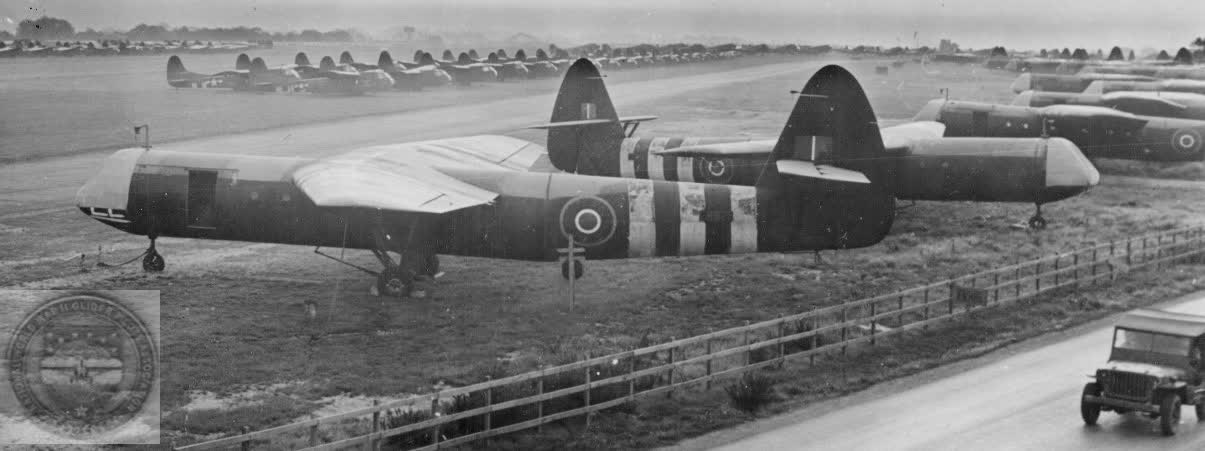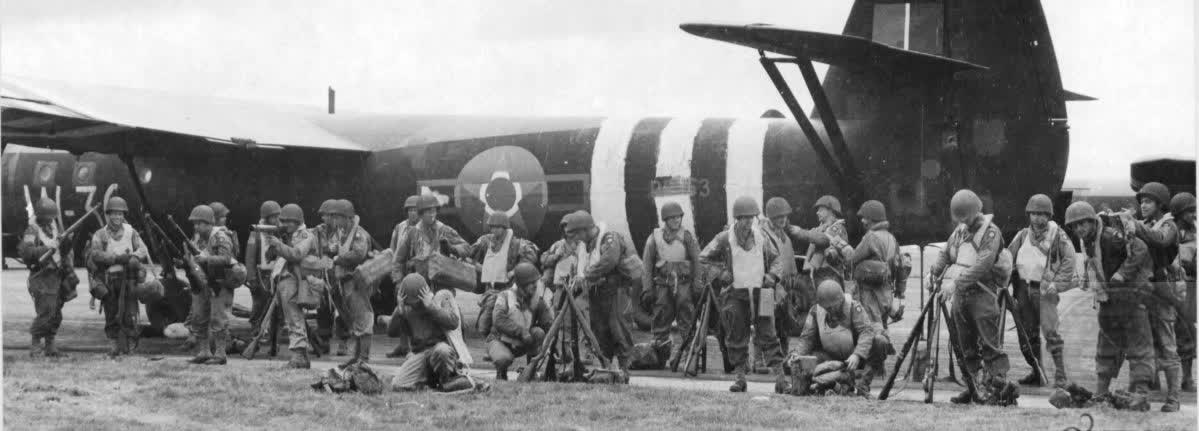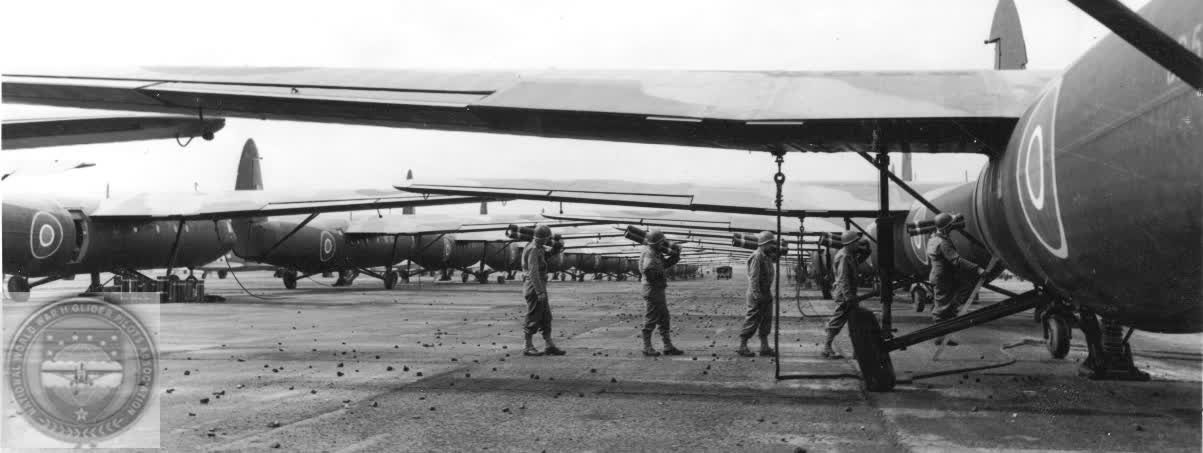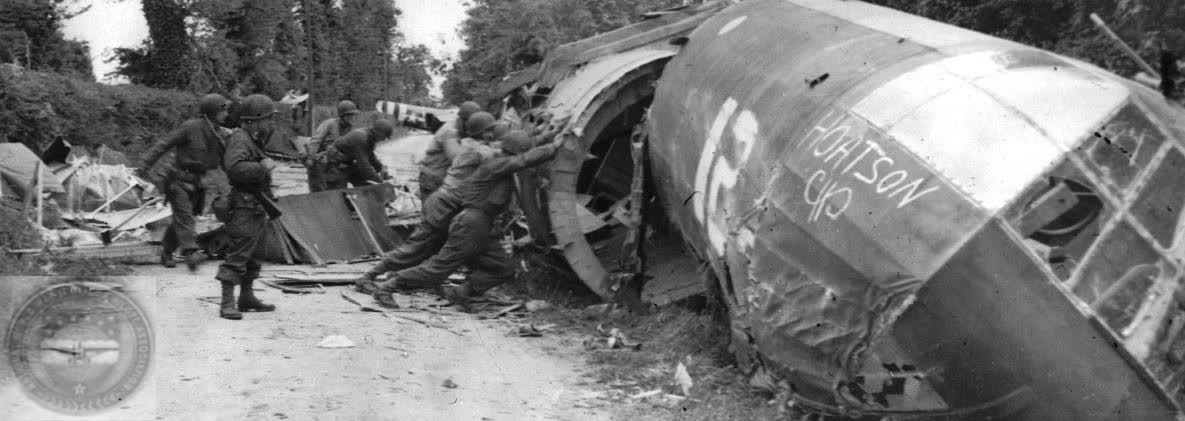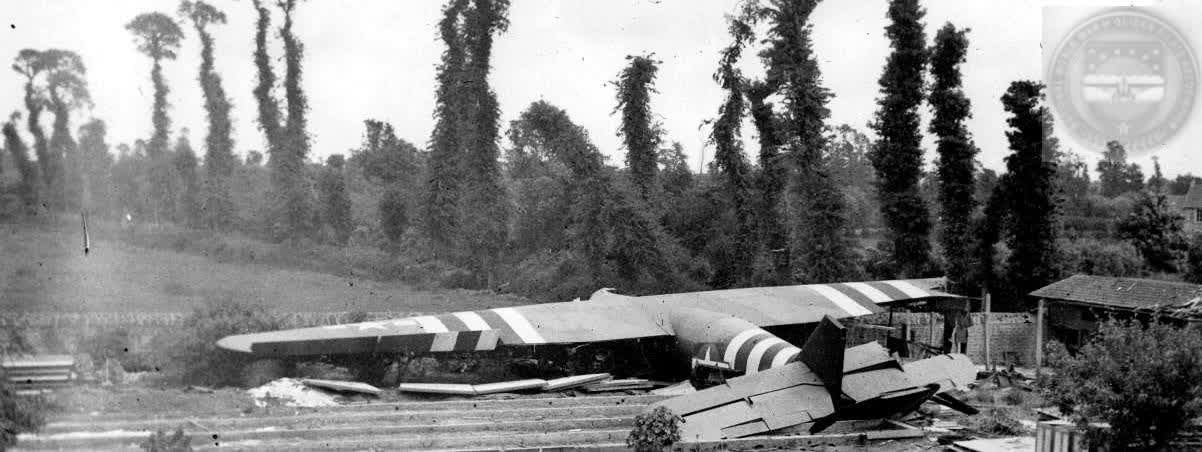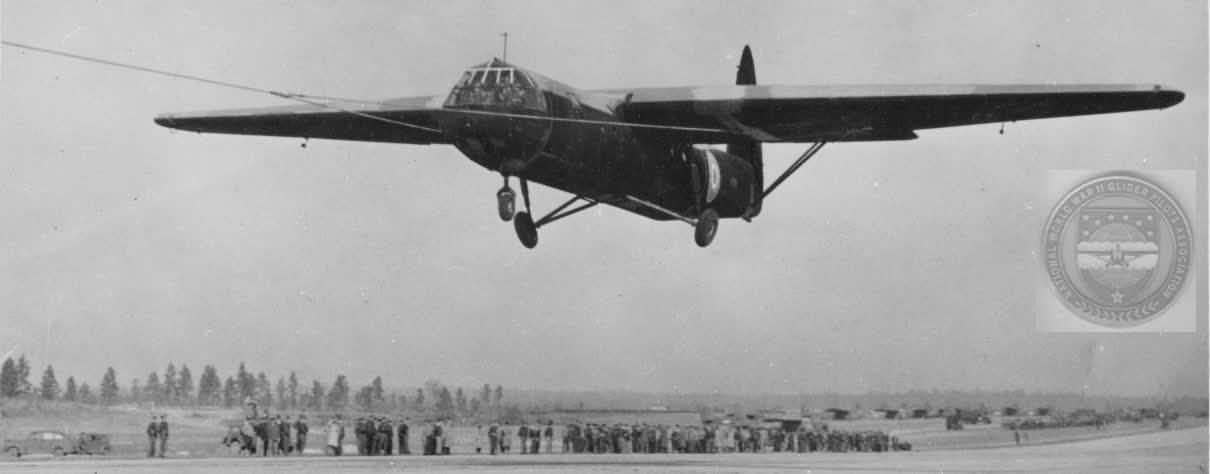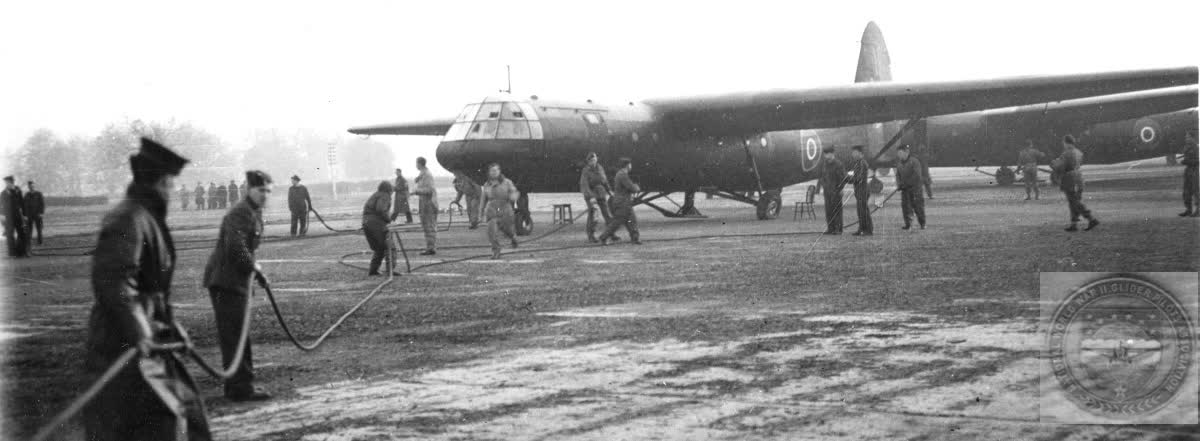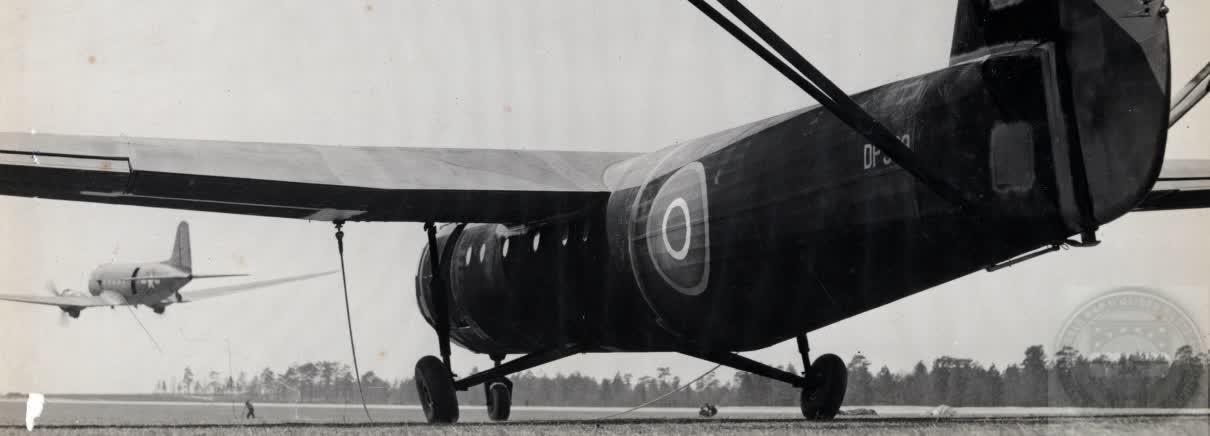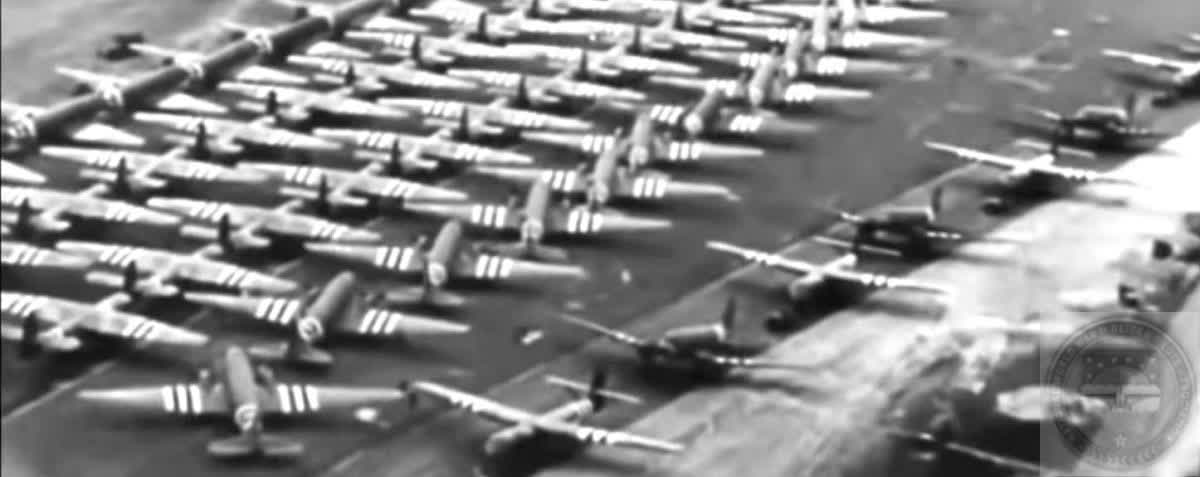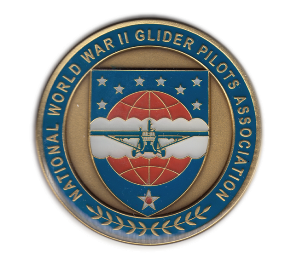National WWII Glider Pilots AssociationLegacy Organization of veterans National WWII Glider Pilots Association. Discover our History, Preserve our Legacy | ||
THE HORSA GLIDERThis British glider designed in 1940 was first flown in the United Kingdom on September 12, 941. Production began in June of 1942. The Horsa had a wingspan of 88 Feet and Weighed 8,370 lbs. empty. It was all wooden construction and fabric covered. There were two models of the Horsa glider Model I (Mk.I) was the troop version, 67 feet long. It carried two pilots ad 20 to 25 troops with varying amounts of equipment. The loaded capacity was 15,500 lbs. with a payload of 7,000 lbs. Model II(Mk.II) was the second version with a hinged nose for loading of equipment straight away to eliminate having to wrestle equipment sideways through the side door. It was 67' 11" long and weighed 15,750 lbs. loaded. A British source says the gross weight was 15,250 pounds. This source also implies that all Horsa gliders had the hinged nose which was not true. The Horsa was the source for features of the UAAAF XCG-13 and the XCG-10. The Horsa was used in the Sicily, Normandy, Holland and the invasion of Germany; Rhine Crossing. The Horsa was flown by Darlyle Watters1 and several other American pilots in the Normandy invasion.2 Perhaps because it was larger, it was not as durable as the CG-4A and more deaths resulted in this glider during a crash landing than usually resulted in the CG-4A. Loading and unloading the first Horsa was difficult as it was so far off the ground. A jeep had to be pushed up a steep ramp and turned ninety degrees to get it inside of model I version. Although the model II version had the hinged nose for straight-in loading of equipment, the floor was more than three feet above the ground. Getting equipment out of the Horsa took quite a lot of time. Experiments were tried using cordite explosive to blow the tail end off so equipment could be off loaded faster. the cordite was wrapped around the bolts holding the tail section to the fuselage. However, in most cases, the cordite did not ignite and the tail had to be unbolted. Generally, removing he bolts took a lot of time and hazardous if there was enemy ground fire. The Horsa had great trailing edge flaps that were spit and were hydraulically controlled. The made it possible to fly in at a steeper glider angle with a flare out just before reaching the ground. Of course when visibility was bad, it was difficult to see the ground and know when to flare out to land. For this reason pilots who had experience with the Horsa and CG-4A preferred the nose high fling attitude of the CG-4A as it would land itself in that nose up position. But the thee were many CG-4A gliders severely overloaded and improperly loaded that were dangerous to fly. Darlyle Watters was one of the first instructors in advanced tactical glider flight training. Darlyle and others including Mike Murphy 3 used to do loops in the CG-4A. In order to wake up a student pilot who was a bit squeamish about glider at night, Darlyle would "take it" from the student, immediately do a loop and "give it" back to the student. In England, Daryle had a power pilot friend whom he was always making some kind of bet with. Before D-Day one bet they had involved the power pilot coming back from a flight with green on the tips of his propeller and Darlyle coming back with grass stuffed between the tire and trim of his glider's wheels. They were constantly "buzzing" places in the area. One day they buzzed a country house and the prop wash of the C-47 blew slate shingles off the house. Darlyle had to fly through this barrage of shingles as they fluttered past his CG-4A. Later they found out the house was used by Winston Churchill. On D-Day, Normandy, Darlyle and his pilots flew six Horsa gliders. Darlyle was the only one who landed his glider in one piece. He liked the steep glider angle when landing the Horsa. (Watters) One day, two P-51 fighter pilots came to CCAAF from Wright and asked if they could take a glider ride. Jim Mitchell said Ted Walkowicz, who was head of flight test, told the men a Horsa was going up shortly. the men accepted the ride. Jim says he was on the flight and when the glider nosed straight down to land, both fighter pilots "tossed their cookies." .When the Horsa #DP-425 4 first arrived in the U. S., it was at Wright Field because Clinton County Army Air Force was not operational. Bill Sauers was the glider pilot on one of its first flights there. There was no ready exit from the cockpit, so the glider pilots had the doors removed to provide faster egress in case of an emergency. Smokey Miller was in the cargo area walking about observing the craft as they flew at approximately 5,000 feet altitude. The glider suddenly lurched and Smokey found himself quickly heading for the open door. luckily he was able to maintain his footing and stopped himself from going through the door by extending both arms and catching the edge of the opening. Although he was wearing a back pack parachute, Smokey says, fifty-six years later he can remember how the ground looked below and how his heart seemed to jump into his throat. -------------------- --------------------- |
CG-4A WWII CARGO GLIDER GENERAL SPECIFICATION - CG-4A
Wing Span -- 83', 8" Length (Overall) -- 48', 3-3/4" Height -- 12', 7-7/16" Weight, design -- 3,750 lbs Gross Weight, design -- 7,500 lbs Wing Chord -- 10', 6" Specs for covering the CG-4A call for: Flightex Intermediate airplane fabric manufactured by Suncook Mills, or an equivalent light airplane cotton fabric. More Specifications
CG-4A WAS FLIMSY? COMMUNICATION SYSTEM CG-4A Loads CG-4A Load Facts CG-4A Cockpit CG-4A Instrument Panel 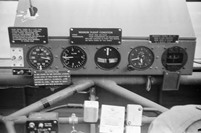 STORIES:
|
The HORSA GLIDER |
GLIDER PICKUP/Snatch Snatching a Glider RECLEMATION American Glider Pilots Captured by British A/B by William SIMONSEN Double Snatch by Charles Day First Glider Snatched from Normandy by Gerald BERRY REMAGEN Glider Retrieval by Jungle Moonlight: Burma, 1944 by Leon SPENCER Charles DAY Keith H. THOMS NWWIIGPA Deputy Wing Commander
Eastern United States Military Snatch Pickup Summary
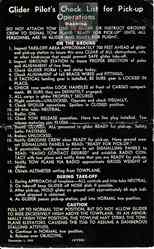
Glider Pilot Check List
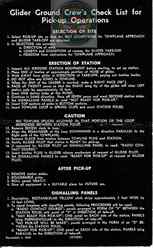
Glider Ground Crew Check List
|
OUR TOW SHIPS |

